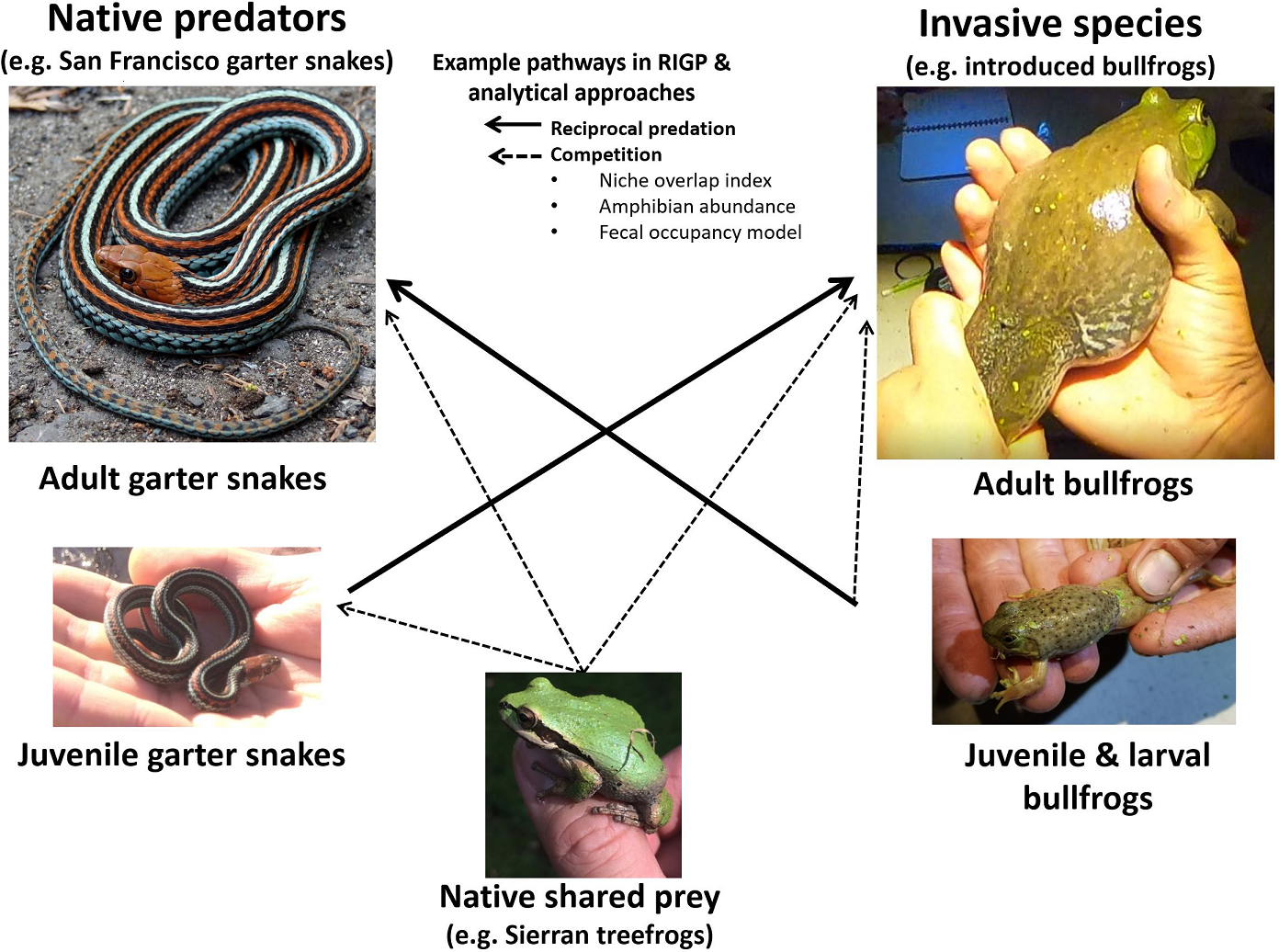When Introduced Prey Violates Trophic Hierarchy: Conservation of an Endangered Predator
Abstract/Summary
Introduced species often disrupt established food webs, but some native predators can come to rely on introduced prey. Understanding the net effects of the non-natives on imperiled predators is crucial for planning conservation measures. The invasive American bullfrog (Lithobates catesbeianus) can be prey, predator, and competitor for the critically endangered San Francisco garter snake (Thamnophis sirtalis tetrataenia). We examined the seasonal prey use of a San Francisco garter snake population that co-occurs with American bullfrogs to examine intraguild predation between these species. Juvenile and adult snakes mainly consumed native anurans instead of American bullfrogs, and this diet pattern peaked in spring, a critical foraging period for the snakes. In spring, large adult American bullfrogs also foraged heavily on native anurans and displayed a high degree of diet overlap with San Francisco garter snakes. Invasive American bullfrogs are detrimental to San Francisco garter snakes mainly through seasonal competition rather than reciprocal predation. Removal of invasive species provided further evidence that eliminating American bullfrogs can benefit San Francisco garter snakes by reducing predation pressure on their shared amphibian prey. Better understanding the interactions of invasive species with native species of conservation concern informs management practices and improves conservation outcomes.
Publication details
| Published Date: | 2021-03-03 |
| Outlet/Publisher: | Biological Conservation 256 |
| Media Format: | URL |
ARMI Organizational Units:
Southwest, Northern California - BiologyTopics:
DroughtInvasive Species
Management
Place Names:
CaliforniaKeywords:
ARMIconservation
drought
introduced species
invasives
management
pond-breeding amphibians
snakes
T&E

